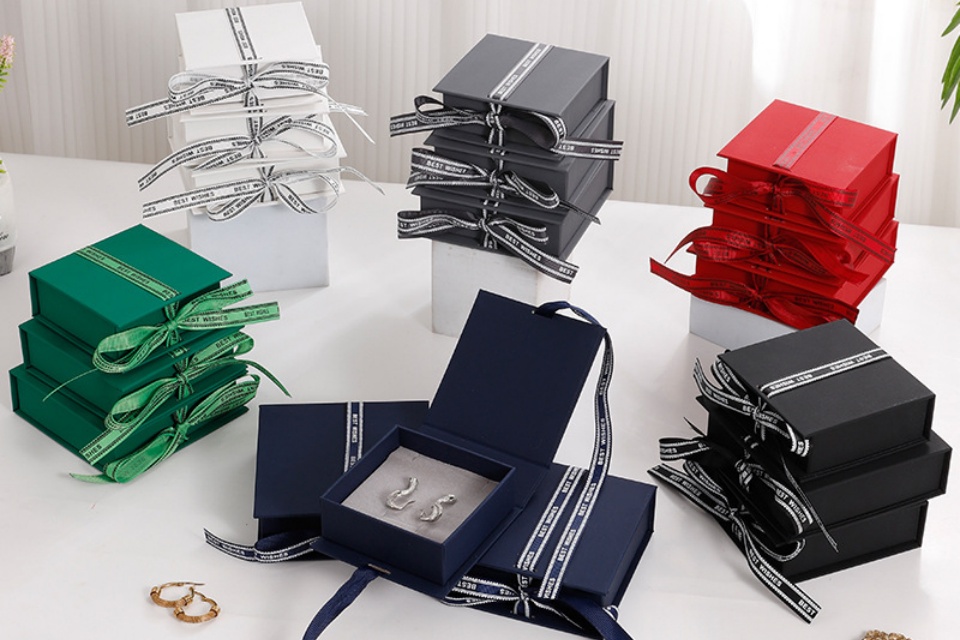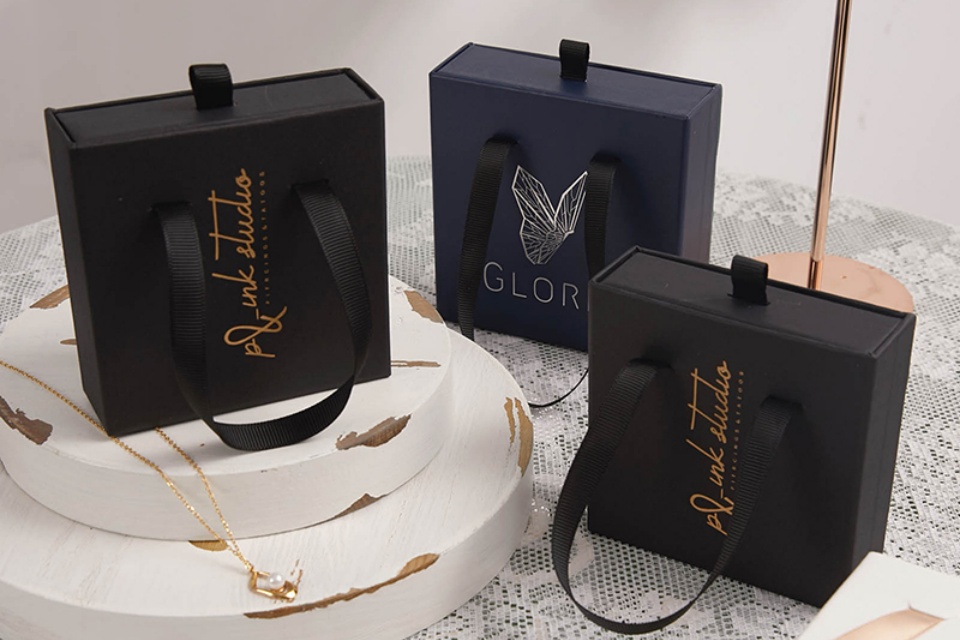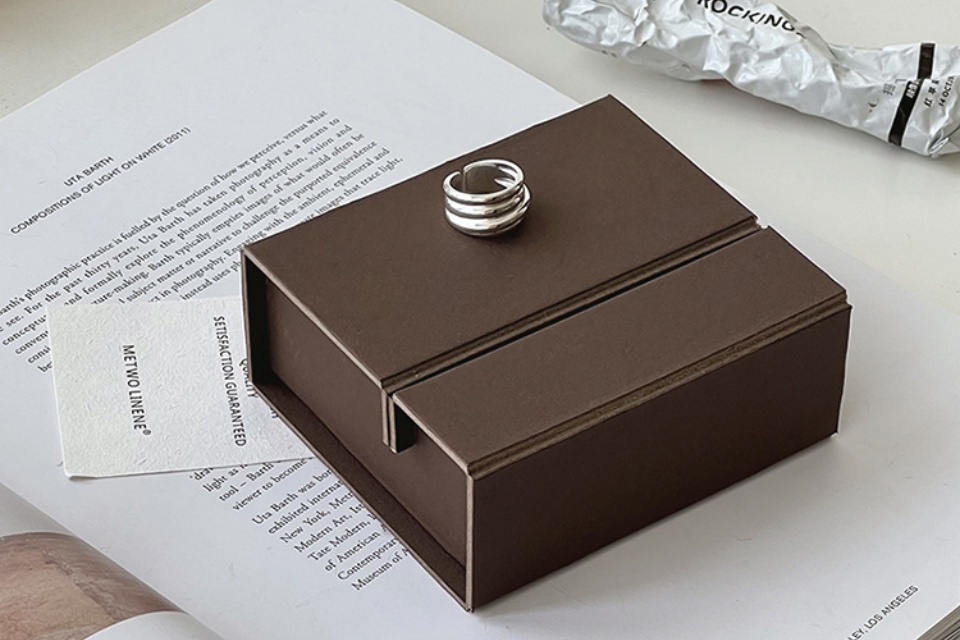Our News
Creative Jewelry Packaging Ideas To Wow Customers
Creative Jewelry Packaging Ideas To Wow Customers
Summary
Creative jewelry packaging ideas are essential for jewelry brands aiming to enhance customer experience, differentiate their products, and foster brand loyalty. In an increasingly competitive market, innovative packaging serves not only as a protective vessel for jewelry but also as a vital marketing tool that communicates a brand's identity and values. The significance of packaging extends beyond aesthetics; it shapes the unboxing experience, influences purchasing decisions, and can evoke emotional connections between consumers and brands.
The rise of eco-conscious consumerism has prompted many jewelry brands to embrace sustainable packaging solutions. Eco-friendly materials such as recycled paper, biodegradable plastics, and bamboo are being favored for their minimal environmental impact, appealing to the growing demographic of environmentally aware consumers. This shift towards sustainability not only demonstrates a commitment to environmental responsibility but also helps brands reduce costs associated with shipping lighter materials. Prominent brands like Tiffany & Co. exemplify how eco-conscious practices can enhance brand appeal while meeting consumer expectations for sustainability.
In addition to sustainability, the customization of packaging has emerged as a key strategy for brands seeking to stand out. Tailor-made designs that reflect a brand's unique identity—whether through bold colors, unique shapes, or intricate patterns-can significantly enhance perceived value and customer satisfaction. However, the costs associated with custom packaging can be higher, necessitating careful budgeting and consideration of cost-efficient alternatives that do not compromise quality or branding efforts.
The challenge of maintaining a balance between creativity, cost efficiency, and brand consistency remains pivotal. Brands must navigate these complexities while ensuring their packaging resonates with their target audience and reinforces their brand story. Ultimately, effective jewelry packaging not only captivates customers at first glance but also cultivates lasting relationships through memorable unboxing experiences that encourage brand loyalty and repeat purchases.
Types of Creative Packaging
Creative packaging is essential for jewelry brands seeking to enhance customer experience and brand loyalty. Various types of packaging can be employed to create a memorable unboxing experience, each tailored to different branding strategies and consumer preferences.
Eco-Friendly Packaging
The growing trend towards sustainability has led many jewelry brands to adopt eco-friendly packaging. Utilizing recyclable or compostable materials, such as recycled paper, bamboo, or biodegradable plastics, resonates with environmentally conscious consumers. This not only showcases a brand's commitment to sustainability but also helps in reducing packaging weight, thus lowering shipping costs. Eco-friendly designs often feature natural tones and organic inks, appealing to consumers' desire for products that are both stylish and kind to the planet.
Custom Packaging Solutions
Custom packaging allows jewelry businesses to differentiate themselves in a competitive market. Unlike ready-made options, bespoke packaging can incorporate unique shapes, materials, and designs that reflect the brand's identity. For instance, brands can utilize tailor-made packaging solutions that not only enhance aesthetic appeal but also ensure the protection of jewelry during transit by incorporating protective materials such as foam or bubble wrap. Customization often results in higher costs, but it can significantly enhance perceived value and customer satisfaction.
Bold and Expressive Designs
While minimalism remains a popular choice, there is a noticeable shift towards bold and expressive packaging designs that reflect individuality and creativity. Jewel tones and abstract patterns can make packaging stand out, attracting customers' attention and enhancing the overall unboxing experience. Brands are increasingly using vibrant colors and unique illustrations to convey their story and connect with consumers on a personal level, fostering emotional ties through personalized touches such as names or unique messages.
Functional Packaging
Packaging that serves a dual purpose can also add value. For instance, display boxes that transform into organizers encourage customers to retain and showcase their jewelry. Additionally, including practical items like drawstring bags or dusting cloths can elevate the presentation and utility of the packaging, making it more appealing to consumers.
Innovative Packaging Designs
Innovative packaging designs play a crucial role in attracting customers and enhancing the overall presentation of jewelry. A well-crafted packaging solution not only protects the product but also communicates the brand's identity and values. Here are some notable trends and concepts in jewelry packaging design.
Minimalist Aesthetics
Minimalism has gained popularity in jewelry packaging, allowing brands to create a sophisticated yet understated appeal. By opting for solid-colored packages, such as black or white, and combining them with metallic accents and elegant fonts, brands can convey a high-end feel without overwhelming the customer. This approach often uses luxury rigid boxes, which provide a smooth texture and a refined presentation, effectively highlighting the jewelry within.
Unique Shapes and Materials
Incorporating distinctive shapes and sustainable materials can set a brand apart in the competitive jewelry market. For instance, Meadowlark Jewelry utilizes hexagonal boxes, giving their packaging a memorable design that resonates with the luxury of their rings. Similarly, the use of materials like bamboo or recycled paper offers not only aesthetic appeal but also eco-friendliness, aligning with modern consumers' values.
Functional and Practical Designs
Practicality is also an essential element of innovative packaging. Lay-flat pouches, for example, provide a space-efficient solution that can be resealed, offering customers a convenient way to store their jewelry items. This functional aspect enhances user experience while also serving as a long-term branding opportunity, as customers may reuse the pouches.
Customization and Personalization
Custom packaging solutions allow brands to express creativity and cater to specific customer preferences. This can range from bespoke shapes and sizes to the incorporation of unique design elements that reflect the brand's identity. While custom designs often come with higher costs, they enable brands to create a more memorable unboxing experience, which can significantly impact customer loyalty and repeat purchases.
Eco-Conscious Initiatives
The trend towards sustainability has led many jewelry brands to adopt eco-conscious design elements in their packaging. This includes creating reusable packaging that discourages single-use practices and reduces waste. Brands that successfully incorporate aesthetically pleasing, reusable designs not only contribute to environmental efforts but also increase brand visibility through repeated customer use.
By integrating these innovative packaging designs, jewelry brands can create a lasting impression on customers, elevating the overall experience and reinforcing brand loyalty.
Branding Through Packaging
Effective branding through packaging plays a crucial role in establishing a jewelry brand's identity and enhancing customer experiences. Consistent branding across packaging elements—such as logo placement, typography, and color schemes-builds recognition and trust among consumers. Personalization is also essential; tailoring packaging for specific product lines, such as using soft ivory boxes for a bridal collection or playful colors for a children's line, can create a deeper emotional connection with customers.
Enhancing Visual Appeal
The right packaging significantly enhances the visual appeal of jewelry, making it more attractive and engaging to potential buyers. A well-designed package not only showcases the jewelry effectively but also contributes to the overall experience, creating a sense of excitement and anticipation for the customer. This excitement can be further amplified by incorporating protective outer shipping materials, beautiful inner boxes, and decorative elements such as tissue wraps and care cards.
Building Brand Identity
Packaging serves as a powerful tool for reinforcing brand identity. Consistent use of design elements such as colors and logos helps establish a professional image, contributing to building trust and credibility with customers. For brands that focus on sustainability, for example, utilizing eco-friendly materials in packaging can reflect core values and resonate with environmentally conscious consumers. This attention to detail can differentiate a brand in a crowded marketplace, fostering brand loyalty and repeat purchases.
Creating Memorable Experiences
A thoughtfully designed package creates a memorable unboxing experience that enhances customer satisfaction. Personalized touches-like thank-you notes or care instructions-add value and foster a positive relationship between the brand and the customer. Furthermore, innovative packaging can encourage social media sharing of unboxing experiences, which not only amplifies brand visibility but also serves as authentic marketing.
Quality and Presentation
As the price point of jewelry increases, customers expect the packaging to reflect a certain level of quality. Ensuring that packaging materials are durable and visually appealing is essential to meet or exceed customer expectations. High-quality design communicates the perceived value of the jewelry, reinforcing the overall brand positioning in the marketplace.
Cost Considerations
When it comes to jewelry packaging, effective cost management is essential for business sustainability and market competitiveness. Understanding the various cost components involved in packaging can significantly impact a jewelry business's budget and overall profitability.
Fixed and Variable Costs
Packaging costs can be divided into fixed and variable categories. Fixed costs, such as machinery setup, printing plates, and molds, remain constant regardless of the production volume. As order quantities increase, these fixed costs are spread over more units, effectively reducing the cost per unit. For instance, ordering 100 units may cost $2 per unit, whereas ordering 1,000 units could lower the price to $1.10 per unit due to economies of scale. Conversely, variable costs fluctuate with production levels, including expenses related to materials, production labor, inks, and shipping.
Material and Design Choices
Choosing the right materials and design plays a crucial role in managing packaging costs. While premium materials can enhance perceived value, they often come at a higher cost. Conversely, opting for economical yet quality materials-like paper or plastic-can help control expenses. The design process also affects costs; complex designs or high-end finishes can significantly raise packaging expenses, so these factors should be planned early in the design stage.
Bulk Ordering and Budgeting
Bulk ordering is a practical strategy for minimizing costs, as larger quantities usually qualify for better wholesale pricing. A well-thought-out budget enables business owners to explore more purchasing options and ultimately invest in higher-quality packaging solutions. It is essential to prioritize expenditures—deciding whether to allocate more resources to design or materials will influence the overall presentation and effectiveness of the packaging.
Sustainable Packaging Solutions
In today's market, sustainability is a key consideration for many consumers, with approximately 66% of customers factoring a brand's environmental practices into their purchasing decisions. Sustainable packaging options, such as recyclable or compostable materials, can not only appeal to eco-conscious customers but may also reduce shipping costs due to lighter materials. Companies like Tiffany & Co. have set precedents by adopting eco-friendly packaging practices, demonstrating that a commitment to sustainability can enhance brand appeal while also being cost-effective.
Case Studies
Tiffany & Co.: Brand Recognition Through Custom Packaging
Tiffany & Co. is a leading example of how effective packaging can enhance brand recognition and customer loyalty in the jewelry sector. A recent survey revealed that 87% of jewelry enthusiasts recognize Tiffany & Co. largely due to its distinctive custom printed jewelry boxes featuring the iconic logo. The brand's packaging not only serves to protect its luxury items but also acts as a powerful marketing tool, creating a memorable unboxing experience that reinforces the brand's image of elegance and sophistication.
Dior: Innovative Display Strategies
Dior has successfully leveraged unique packaging and presentation to promote brand growth and enhance product attractiveness. Their approach combines meticulous design, material selection, and handmade production to create a packaging experience that resonates with luxury consumers. The thoughtful integration of visual elements in their packaging captures consumer attention, while the overall design embodies the brand's values, setting Dior apart in the competitive luxury jewelry market. This case demonstrates how high-end packaging can influence purchasing decisions and foster brand loyalty.
Sustainable Practices: Building Customer Loyalty
Brands that adopt sustainable packaging practices, such as eco-friendly materials and transparent communication about their sustainability efforts, also report increased customer loyalty. By authentically aligning their values with those of their consumers, these brands can cultivate long-term relationships that benefit both parties. For instance, when customers engage with a brand's commitment to sustainability, they are more likely to become repeat customers and advocates for the brand, showcasing how a conscientious approach to packaging can enhance customer experience and loyalty.
Impact of Unboxing Experiences
The psychological aspects of unboxing play a crucial role in customer satisfaction and brand perception. Innovative packaging designs that offer a delightful unboxing experience can lead to positive emotional responses and encourage customers to share their experiences on social media. This, in turn, fosters brand recognition and attracts new customers, demonstrating the importance of creating a memorable first impression through packaging.
Challenges and Solutions
The packaging industry faces several challenges, particularly in the context of creative jewelry packaging. Overcoming these challenges is crucial for brands seeking to attract customers and maintain a competitive edge.
Selecting the Right Packaging Material
Choosing the appropriate packaging material is one of the primary challenges faced by jewelry brands. With various options available, it can be difficult to balance cost, quality, and sustainability. Paper-based packaging is often considered an ideal solution due to its versatility and environmental benefits. Brands can mitigate cost issues by selecting inexpensive yet quality materials and making thoughtful design choices that emphasize functionality without compromising aesthetics.
Attracting Customer Attention
Drawing consumer interest in a crowded retail space is another significant challenge. With competitors' products displayed alongside, it is essential for packaging to stand out. Brands must explore their target audience's persona to devise packaging strategies that captivate potential customers. This includes using bold colors and unique patterns to reflect individuality and creativity, which are increasingly important in appealing to modern consumers.
Maintaining Brand Consistency
While creative packaging is vital for attracting attention, it must also maintain brand consistency. Packaging that deviates from established brand elements can confuse customers and dilute brand identity. Brands need to ensure that their packaging design aligns with their overall marketing strategy and resonates with their brand archetype, making personalized packaging an effective solution.
Cost Efficiency and Sustainability
Maintaining cost efficiency without sacrificing quality presents a unique challenge. Simplifying packaging designs while using high-quality, durable materials can help achieve this balance. Additionally, producing in bulk can lower per-unit costs. There is a growing trend toward sustainable materials, which are becoming more affordable and can help brands meet both budgetary and environmental goals. Utilizing reusable or minimal packaging can further reduce waste and improve cost efficiency in the long run.
Partnering with Experts
Collaborating with expert packaging companies can significantly alleviate the challenges faced in designing and producing creative jewelry packaging. These partnerships can provide valuable design support and expertise, helping brands create attractive, functional, and cost-effective packaging solutions. By leveraging the knowledge of packaging specialists, brands can effectively navigate the complexities of the market while focusing on their core business objectives.
Categories
Latest News
Contact Us
Contact: Aaron Lee
Phone: +8613570866244
Tel: +8675529490260
Add: Li Songlang 2nd Industrial Zone,No.18,FengTang Rd,Guangming New District


